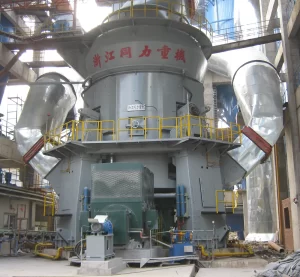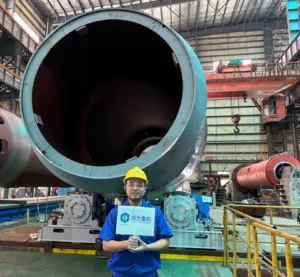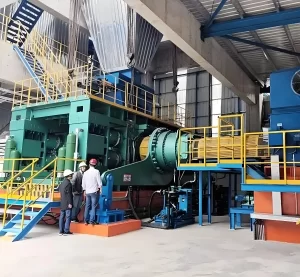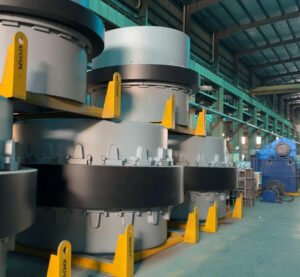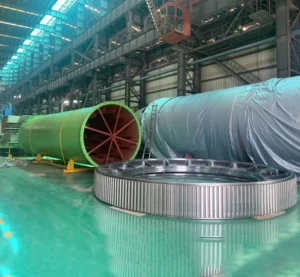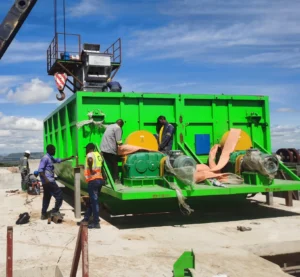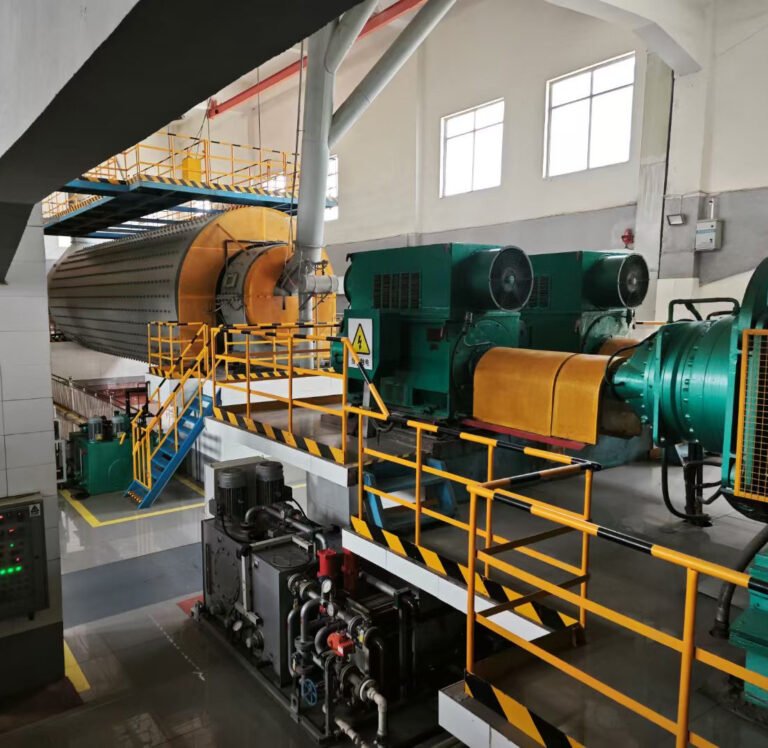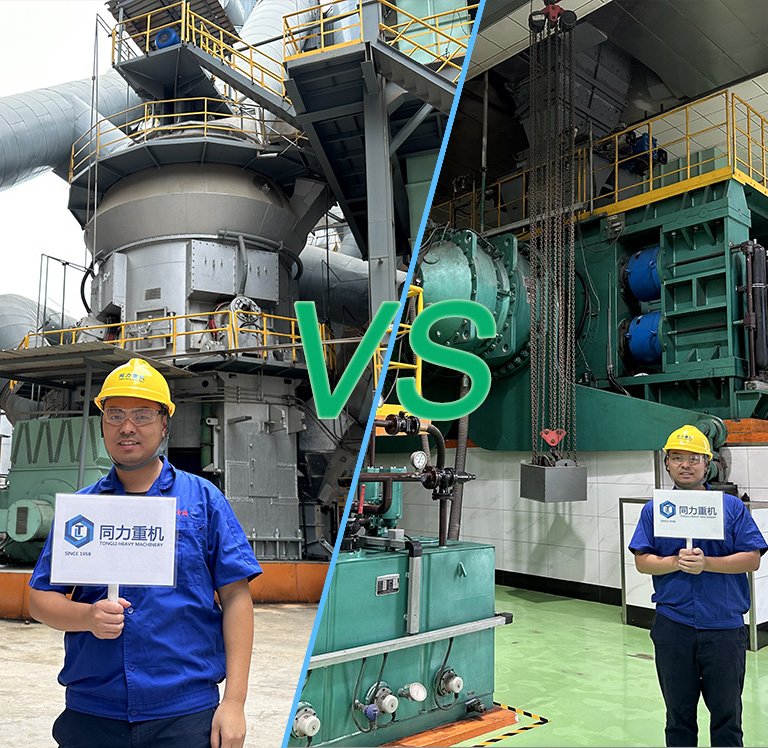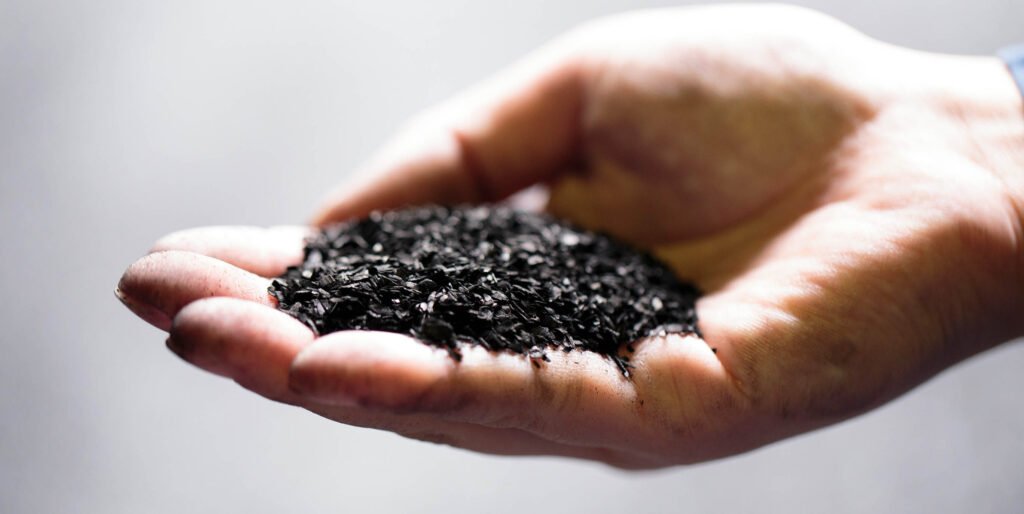
Recently we have received a lot of inquiries about activated carbon plant, so we wrote this article to help customers better understand the difference between Wood Charcoal and Activated Carbon, because we found that many customers thought that carbonization furnace can also produce activated carbon. Although their names are similar, there are actually complete different things. Simply Put, Charcoal is made of organic matter like wood, which is carbonized at high temperature under air-tight conditions. It has a relatively simple pore structure and is mainly used for heating, barbecue or as fuel. It can also be used in some traditional processes; while activated carbon is made of coal, wood, fruit shells, etc., and after carbonization, it is activated by physical or chemical methods to form a more developed pore structure and a larger specific surface area. It has a strong adsorption capacity and is widely used in water treatment, air purification, food decolorization, pharmaceutical purification and other fields that require efficient adsorption. In short, charcoal focuses on basic uses such as fuel, while activated carbon is used in various purification and purification scenarios with its stronger adsorption performance. And in this article we will introduce the difference in various aspects.
What is charcoal?
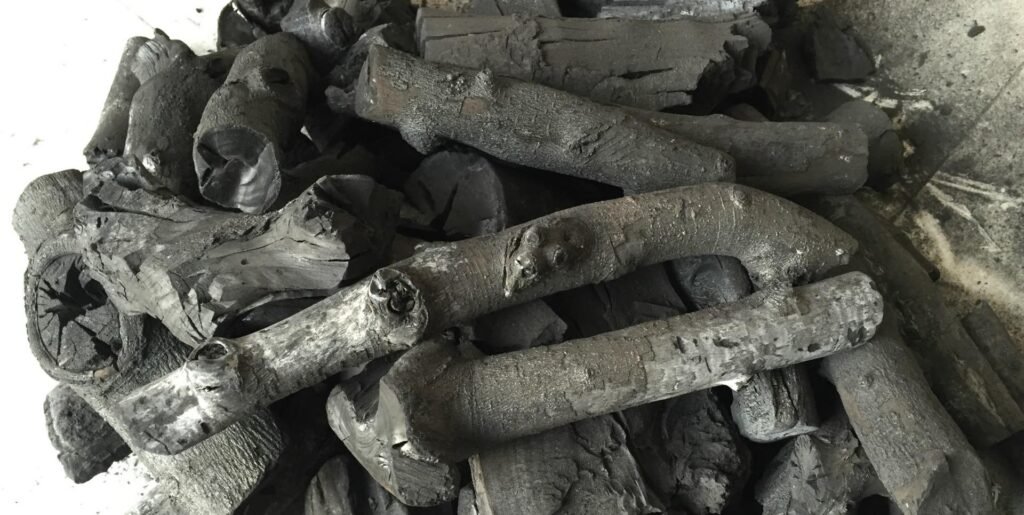
1. Definition of charcoal
Charcoal is a black porous solid made from organic materials for example wood, bamboo, fruit shells, nut shells under conditions of air isolation or limited oxygen supply through high-temperature carbonization (usually at 300-900℃). Its preparation process mainly includes raw material drying, pyrolysis carbonization and cooling. During the carbonization process, the moisture, volatile carbon dioxide, carbon monoxide, and methane in the raw materials gradually escape, and finally form a porous structure with carbon as the main component. In the agricultural field, charcoal can be added to the soil to improve soil quality, retain moisture and absorb harmful substances, or as a feed additive for livestock and poultry breeding. In industry, it can be used to make carbon disulfide, the initial raw material of activated carbon, etc.
2. Type of charcoal
Charcoal can be divided into many types according to the raw materials, preparation process and use. From the perspective of raw materials
Charcoal type based on raw material:
- Wood charcoal is the most common type, mostly made of hardwood (such as oak, birch) or softwood by carbonization. It has uniform fire and less smoke when burning, and is often used for barbecue and smelting;
- Bamboo charcoal is made of bamboo. After high-temperature carbonization, the structure is denser, with better adsorption and hardness. In addition to being used as fuel, it is also widely used in air purification, water treatment and textile material addition;
- Fruit shell charcoal (such as coconut shell, apricot shell) has a rich pore structure, long burning time and high calorific value. It is often used as a raw material for high-quality barbecue charcoal or further processed into activated carbon.
Charcoal type based on burning temperature and calorific value:
- High-temperature charcoal (carbonization temperature is usually higher than 700℃) has high carbon content and high hardness, which is suitable for industrial smelting or long-term combustion scenarios;
- Medium and low-temperature charcoal (carbonization temperature 300-600℃) has more volatiles, is flammable but has a shorter burning time, and is mostly used for home heating or ordinary barbecue.
Other charcoal type:
- Mechanized charcoal is made by crushing sawdust and other raw materials, extruding and carbonizing them. It has a regular shape, high combustion efficiency and is environmentally friendly. It is an important type to replace traditional natural charcoal;
- Medicinal charcoal needs to be specially purified and has strong adsorption. It is often used in the medical field to adsorb toxins or assist in the treatment of gastrointestinal discomfort.
Different types of charcoal have different pore structures, carbon content, combustion characteristics and application scenarios to meet the needs of multiple fields such as fuel, environmental protection, industry, and medicine.
3. Charcoal’s properties
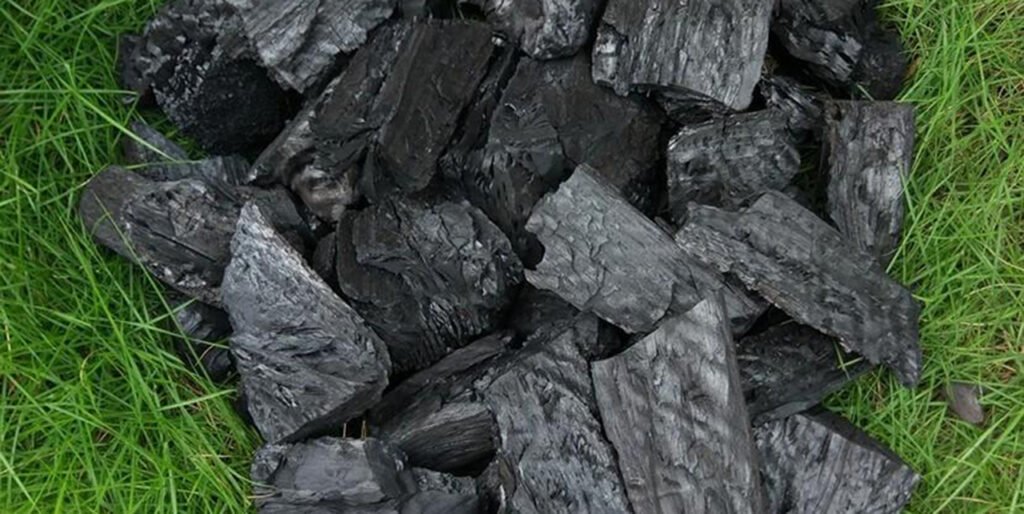
Charcoal's property can be demonstrated in the following 3 aspects:
In terms of physical properties
In terms of physical properties, it is a black porous solid with a light and brittle texture. Its density is usually between 0.2 and 0.4 g/cm³. The pore structure varies depending on the raw materials and processes. Although it has fewer pores than activated carbon, it still has a certain specific surface area (generally 10-500 m²/g). Its surface is rough and has adsorption capacity. Its thermal conductivity is poor, making it a good thermal insulation material, and its electrical conductivity is weak.
In terms of chemical properties
In terms of chemical properties, the main component of charcoal is carbon (the content is about 80%-95%, which increases with the increase of carbonization temperature), and it contains a small amount of hydrogen, oxygen, nitrogen and other elements and mineral ash. Its chemical properties are relatively stable. It is not easy to react with other substances at room temperature, but it has reducibility at high temperature and can react with oxides. Its surface functional groups (such as hydroxyl, carboxyl, etc.) give it a certain chemical adsorption capacity.
In terms of combustion characteristics
The combustion characteristics are flammable, with an ignition point of about 300-400℃, a light blue flame (initial volatile combustion), and red-hot combustion of carbon in the later stage. The calorific value is about 25-35 MJ/kg depending on the raw materials. There is less smoke and the ash is white or grayish white; high-temperature carbonized charcoal has a longer burning time and lower ash content.
In terms of adsorption
In addition, charcoal also has a certain adsorption capacity and can adsorb gases, pigments and some harmful substances, but its adsorption capacity and pore development are far lower than those of activated carbon, and the adsorption has a certain selectivity, and it is easier to adsorb substances with larger molecular weight. These properties enable it to play different roles in the fields of fuel, adsorption, industrial processing, etc.
4. Applications of charcoal
Charcoal has many different types of application in many field, we will list 5 typical industry that uses charcoal.
Fuel and Energy
- Daily Life Fuel: As a traditional fuel, it is used for home heating and cooking (such as barbecue and charcoal cooking). It is especially common in catering scenes because of its high temperature, less smoke and dust when burning, and can give food a unique flavor.
- Industrial smelting: It is used to smelt metals (such as iron smelting and copper smelting) in ancient and some traditional processes, and its high-temperature reducing property is used to reduce metal oxides; it can also be used as fuel for high-temperature industrial processes such as firing ceramics and lime.
- Energy substitutes: In areas with insufficient electricity supply, charcoal can be converted into combustible gases (such as carbon monoxide and hydrogen) through gasification technology and used as temporary energy.
Adsorption and purification
- Water treatment: The adsorption of charcoal can be used for simple water filtration to remove pigments, odors and some organic impurities in water (although the effect is weaker than activated carbon, the cost is lower). It is common in outdoor survival or simple water purification scenes in rural areas.
- Air purification: Charcoal with a more developed pore structure such as bamboo charcoal can be made into charcoal bags and placed indoors to absorb formaldehyde, odors and some dust to improve air quality.
- Food and medicine: In the food industry, charcoal can be used for decolorization and purification of syrups and beverages; in the medical field, medicinal charcoal (after special treatment) can be taken orally to absorb gastrointestinal toxins and relieve diarrhea or food poisoning symptoms.
Agriculture and horticulture
- Soil improvement: Adding charcoal to the soil can increase porosity, improve drainage and air permeability, and absorb harmful substances such as heavy metals and pesticide residues in the soil to improve soil fertility; in addition, charcoal can also retain moisture and help plant root growth.
- Fertilizer and feed additives: Charcoal ash is rich in minerals such as potassium and calcium and can be used as a natural potassium fertilizer; some charcoal powder is added to livestock and poultry feed to absorb intestinal toxins and promote digestion.
- Horticultural planting: Laying charcoal in potted plants can prevent soil compaction, inhibit microbial reproduction, and reduce the risk of plant root rot.
Industry and manufacturing
- Chemical raw materials: Charcoal is an important raw material for the manufacture of carbon disulfide (CS₂, used in rubber and pesticide production), and can also be used as a reducing agent in certain chemical synthesis reactions.
- Activated carbon production: Fruit shell charcoal, wood charcoal, etc. can be made into activated carbon after further activation treatment, which is used in high-end adsorption scenarios such as water treatment, air purification, and pharmaceutical purification.
- Metal processing: In the casting process, charcoal can be used as a covering agent to prevent the oxidation of molten metal, or as a reducing agent for metal surface treatment.
Culture, art
- Painting and art: Charcoal sticks and charcoal pencils are commonly used tools for sketching and quick sketching. Because of their rough brushstrokes and easy modification, they are widely used in artistic creation.
- Traditional crafts and medicine: In some cultures, charcoal is used in traditional medicine (such as hemostatic and detoxifying medicine in traditional Chinese medicine) or religious ceremonies; in addition, the preparation history of activated carbon is also closely related to charcoal crafts.
- Environmental protection and sustainable development: Mechanized charcoal uses waste materials such as sawdust as raw materials, which can replace natural wood and reduce deforestation; the ashes after burning charcoal can be recycled as fertilizer or building material additives.
5. Limitations of charcoal
The limitations of charcoal in its application are mainly due to its inherent characteristics of physical structure, chemical properties and preparation process.
- Pore structure is far inferior to activated carbon: In terms of adsorption capacity, the pore structure of charcoal is far less developed than that of activated carbon, and the specific surface area is usually only 10-500 m²/g (activated carbon can reach 1000-3000 m²/g), resulting in a small adsorption capacity, limited adsorption effect on small molecules and low-concentration pollutants, and difficult to adsorb substances with strong polarity or very small molecular weight (such as some inorganic ions), which cannot meet the needs of high-end adsorption scenarios such as water treatment and air purification.
- Combustion performance and efficiency are still not ideal: In terms of combustion performance and efficiency, when charcoal is used as a fuel, the calorific value (about 25-35 MJ/kg) is lower than that of coal or natural gas, and the combustion time is greatly affected by raw materials and processes. When medium and low temperature charcoal is burned, volatiles are prone to produce smoke. Although high temperature charcoal burns more stably, the preparation cost is higher; in addition, charcoal combustion releases carbon dioxide, and traditional charcoal production relies on wood, which may lead to the destruction of forest resources, which is not in line with the modern low-carbon environmental protection concept.
- Relatively high cost: In terms of preparation and cost constraints, the production of natural charcoal requires a large amount of biomass raw materials such as wood and bamboo, and the carbonization process takes a long time (several hours to several days), and the output is limited by the supply of raw materials and the region; although machine-made charcoal can use waste materials, the extrusion molding and carbonization processes increase the cost of equipment investment. Compared with fossil fuels or synthetic materials, its economic efficiency is not advantageous in large-scale industrial applications.
- Relatively single function: In terms of single function and substitution limitations, the adsorption and combustion characteristics of charcoal are difficult to achieve a qualitative breakthrough through simple process optimization. For example, it has strong adsorption selectivity and is difficult to regenerate (high cost of reuse), and it cannot replace high-energy-density energy as a fuel; in fields such as medicine and food that have high safety requirements, the ash content of charcoal (including impurities such as heavy metals) and incompletely carbonized components may bring risks, requiring additional purification and further increase costs.
- Too brittle: In addition, charcoal has low physical strength and is brittle and easy to break. It is easy to clog pores in application scenarios that require structural support (such as industrial adsorption column fillers), affecting the use effect; although it has high chemical stability, its reducibility at high temperatures may cause side reactions in certain environments (such as the introduction of carbon impurities in metal smelting), limiting its application in precision industries. These limitations have led to the application of charcoal being concentrated in basic scenarios with low performance requirements, and it has gradually been replaced by alternatives such as activated carbon and fossil energy in high-end fields.
Now that we have a full understanding of what charcoal is, next we will go through the characteristics of activated carbon.
What Is Activated carbon?
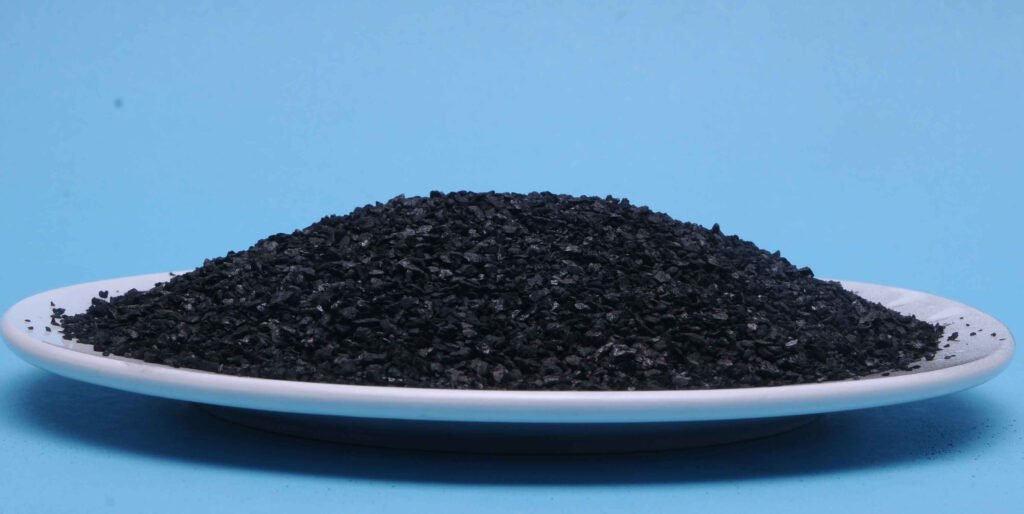
1. Definition of activated carbon
Activated carbon is a porous carbon material that has undergone a special "activation" treatment. Its core characteristic is to enhance the development of the pore structure, thereby having extremely strong adsorption capacity. It is usually based on carbon-containing raw materials such as wood coconut shells, wood, coal or fruit shells. It is first carbonized to form an initial porous structure, and then activated by high-temperature steam, carbon dioxide or treated with chemical reagents such as zinc chloride and phosphoric acid to further expand the pores and increase the specific surface area, ultimately forming a loose porous structure with a specific surface area of 1000-3000 m²/g. This structure enables it to not only capture molecules, ions and particulate matter in gases and liquids through physical adsorption, but also chemically adsorb through surface functional groups (such as hydroxyl and carboxyl groups), and exhibits efficient adsorption capacity for substances such as formaldehyde, benzene, heavy metal ions, pigments, and odors. In addition, activated carbon has the characteristics of fast adsorption speed, high selectivity, and repeated regeneration (recovering adsorption performance through heating, acid-base treatment, etc.).
2. Type of activated carbon
By raw material source
- Wood activated carbon: It uses wood (such as birch, pine), sawdust, bamboo, fruit shells (coconut shells, apricot shells, walnut shells) and other biomass as raw materials. Coconut shell activated carbon is a representative of high-end activated carbon because of its hard texture and uniform pores. It has a well-developed pore structure, a high specific surface area (up to 1500-3000 m²/g), strong adsorption selectivity, and excellent adsorption effects on organic matter, pigments and odors.
- Coal-based activated carbon: It uses coal such as anthracite, lignite, and bituminous coal as raw materials. It has low cost and a wide range of raw material sources. It has a wide pore size distribution, a high proportion of mesopores and macropores, and high compressive strength, but its specific surface area is relatively low compared to wood charcoal (800-2000 m²/g).Synthetic activated carbon: It uses artificial synthetic materials such as petroleum coke, asphalt, and plastics (such as phenolic resin and polyacrylonitrile) as raw materials. The pore structure is controllable, and the pore size can be customized through process design (such as the extremely high proportion of micropores in super activated carbon), and the adsorption performance is specific.
- Synthetic activated carbon: It uses artificial synthetic materials such as petroleum coke, asphalt, and plastics (such as phenolic resin and polyacrylonitrile) as raw materials. The pore structure is controllable, and the pore size can be customized through process design (such as the extremely high proportion of micropores in super activated carbon), and the adsorption performance is specific.
By manufacturing process
- Physical activation activated carbon: After the raw materials are carbonized, the carbon skeleton is etched at 800-1200℃ by high-temperature water vapor, carbon dioxide and other gases to form pores. The pores are mainly micropores, with uniform pore size distribution, few surface functional groups and high chemical stability.
- Chemical activation activated carbon: The raw materials are mixed with chemical reagents such as zinc chloride, phosphoric acid, potassium hydroxide and then carbonized. The reagents play a role in pore formation and pore expansion. The pores are more developed, the proportion of mesopores is high, the specific surface area can reach more than 3000 m²/g, and the surface oxygen-containing functional groups are rich.
- Physical-chemical combined activation activated carbon: Combining the above two methods, chemical activation first and then physical activation, or vice versa. The pore structure is more complex, with the advantages of both methods, and the adsorption performance is more comprehensive.
By appearance:
- Powdered activated carbon (PAC): The particle size is usually less than 0.18 mm and is in the form of fine powder. The specific surface area is very large and the adsorption speed is fast, but it is difficult to recycle and regenerate, and it is easy to cause secondary pollution. It is used for water treatment (emergency addition to remove organic matter), syrup decolorization, and purification of pharmaceutical intermediates.
- Granular activated carbon (GAC): The particle size is 0.5-4 mm, in granular form, and is divided into crushed carbon and formed carbon (such as columnar and spherical). The pore diffusion rate is fast, it is easy to fill in the adsorption column, it can be reused, and it has high compressive strength. It is used for fixed bed water treatment (waterworks, sewage treatment plants), air purification equipment, and waste gas treatment.
- Fibrous activated carbon (ACF): It exists in the form of activated carbon fiber, carbon cloth, etc., with a pore size mainly micropores (1-2 nm), and the adsorption sites are evenly distributed. The adsorption/desorption speed is extremely fast (10-100 times faster than granular carbon), light weight, and can be cut and shaped. It is used in mask filter materials, portable air purifiers, organic solvent recovery, and blood purification.
- Honeycomb activated carbon: porous cylinder or block with regular honeycomb channels. Low fluid resistance, large ventilation volume, high adsorption efficiency, easy to install. Applied to automobile exhaust purification, industrial waste gas treatment (such as VOCs adsorption), indoor air purification filter.
3. Property of activated carbon
Having gained a clear understanding of activated carbon, now let us move on to the difference between charcoal and activated carbon.
Difference between charcoal and activated carbon in 10 aspects: Comparison in A to B format
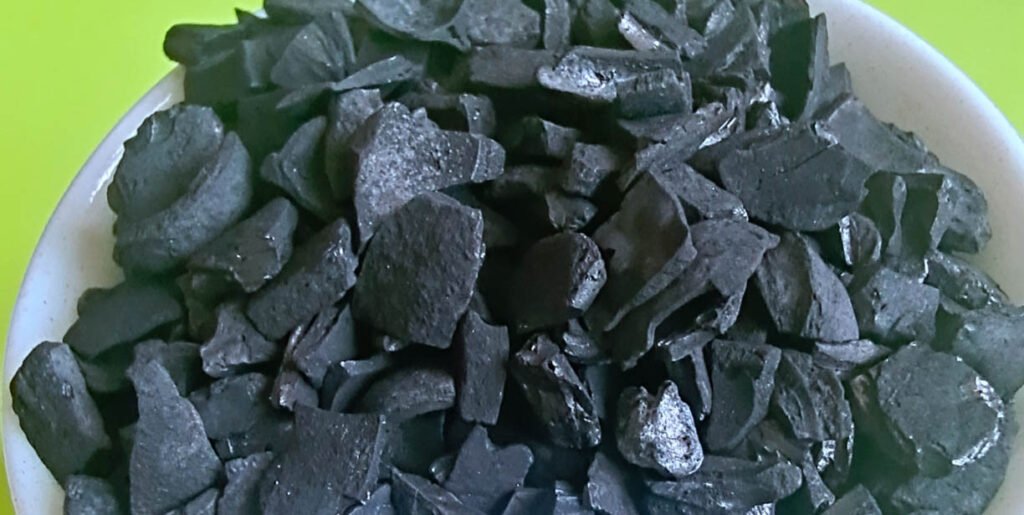
Manufacturing Process
In terms of composition, the raw materials of both are wood, coconut shells and other wood materials, but the production process of activated carbon is much more complicated than that of charcoal. Charcoal only goes through the carbonization stage, while activated carbon, in addition to the carbonization process, also goes through the activation, pickling and drying stages.
- Charcoal: Through low-temperature carbonization (300-600℃) of biomass raw materials (such as wood, coconut shells), pyrolysis under air-tight conditions, only the carbonization process is completed, and pore development is not performed, and the process is simple.
- Activated Carbon: It is necessary to add an activation step after carbonization (physical activation: 800-1200℃ water vapor/carbon dioxide etching; chemical activation: pore formation with reagents such as zinc chloride), and the carbon skeleton is etched by high temperature or chemical reagents to form a developed pore structure, and the process is complicated.
Property
Specific surface area refers to the total surface area per unit mass of material, including the sum of the external surface and the inner wall of the pores. The specific surface area of bamboo charcoal carbonized at 500℃ or above is usually between 150 and 350 m²/g. The specific surface area of activated carbon prepared by physical or chemical activation methods can reach 900 m²/g, and some varieties even exceed 2000 m²/g. Because activated carbon has a more developed pore structure and a higher specific surface area, its adsorption capacity is significantly better than that of ordinary bamboo charcoal.
- Charcoal: It has weak adsorption capacity and mainly relies on physical adsorption on the surface. It has low chemical stability and is easy to react with certain substances. It also has poor acid and alkali resistance.
- Activated Carbon: It has extremely strong adsorption capacity and has both physical adsorption and chemical adsorption (the effect of surface functional groups). It has stable chemical properties, is acid and alkali resistant, and can be reused.
Micro structure
Charcoal is mainly composed of macropores, and its pore sources are mainly from the vessels, vascular bundles and side walls of thin-walled tissues in plant tissues. There are fewer small pores, and the pore size is generally between tens and hundreds of nanometers. In contrast, the structure of activated carbon is mainly micropores, and the pore size is divided into three categories: micropores (≤2nm), accounting for about 60% to 90% of the total pore volume; mesopores (2-50nm), also known as transition pores, accounting for about 5% to 15%; macropores (≥50nm), accounting for about 10% to 30%. Its average pore size is about 1.5nm, which just matches the diameter of many harmful gas molecules, such as formaldehyde (0.44nm), benzene (0.48nm), ammonia (0.414nm), toluene (0.58nm), etc. Therefore, the effect of activated carbon in adsorbing and purifying these small molecule gases is significantly better than that of ordinary bamboo charcoal or charcoal.
- Charcoal: Irregular pore structure, wide pore size distribution (mainly macropores), poor pore connectivity, loose microstructure, and few adsorption sites.
- Activated Carbon: The pores are in the form of a regular network, mainly micropores (<2nm) and mesopores (2-50nm). The pores are well developed and well connected, forming a large number of adsorption channels.
Specific surface area
- Charcoal: Low specific surface area, usually 200-500 m²/g, limited adsorption capacity.
- Activated Carbon: Very high specific surface area, up to 800-3000 m²/g (coconut shell activated carbon even exceeds 2500 m²/g), more adsorption sites per unit mass.
Composition
- Charcoal: The main component is carbon (about 80-95%), with a large amount of ash (5-20%) and residual organic matter, and a high impurity content.
- Activated Carbon: The carbon purity is high (95-99%), and the ash content is usually < 5%. After activation, oxygen/nitrogen-containing functional groups (such as hydroxyl and carboxyl) are introduced to the surface to enhance adsorption selectivity.
Hardness
Bamboo charcoal has high density, high hardness, and is not easy to break. It is suitable for home textile products with high wear resistance requirements. The hardness of activated carbon from different materials varies greatly. Coconut shell activated carbon has high hardness, while bamboo activated carbon is light, soft, and brittle, and is not suitable for products with high wear resistance requirements.
- Charcoal: It has a loose and porous texture, low hardness, is easy to break, has poor compressive strength, and cannot withstand high pressure environments.
- Activated Carbon: Granular products have high hardness (such as columnar carbon with compressive strength > 90%), are wear-resistant, and are suitable for filling in equipment that needs to withstand pressure, such as adsorption columns.
Raw material consumption
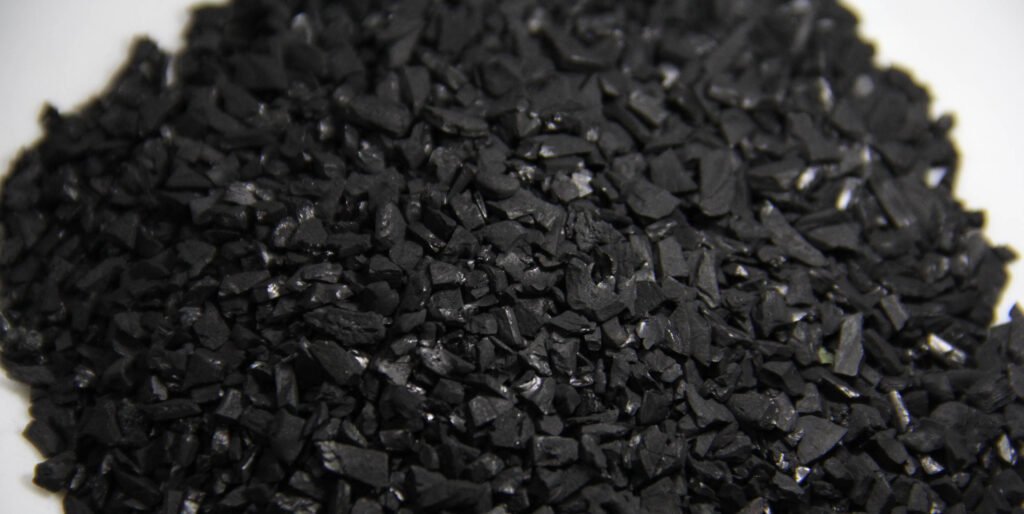
The production process of bamboo-based activated carbon consumes a lot of raw materials and is mainly divided into two stages: the first step is to carbonize bamboo into bamboo charcoal, and the second step is to further activate bamboo charcoal into activated carbon. In the carbonization stage, due to the high water content and high volatile components of bamboo, it usually takes about 5 to 6 tons of fresh bamboo to produce 1 ton of bamboo charcoal. Subsequently, in the activation process (whether physical or chemical methods are used), due to the corrosion of part of the carbon skeleton to form a microporous structure, 1 ton of activated carbon usually requires 3 to 5 tons of bamboo charcoal.
Comprehensive calculations show that: Assuming that 6 tons of bamboo are used → 1 ton of bamboo charcoal, 3 to 5 tons of bamboo charcoal are used → 1 ton of activated carbon. The total bamboo consumption is: 6 tons × 3 to 5 = 18 to 30 tons of bamboo to produce 1 ton of bamboo-based activated carbon.
Therefore, compared with ordinary bamboo charcoal, the raw material consumption of bamboo activated carbon is more than ten times higher, and the production cost is also higher. However, due to its more developed pore structure and larger specific surface area, bamboo activated carbon is far superior to unactivated bamboo charcoal in adsorption performance and is suitable for high-standard adsorption scenarios such as air purification and water treatment.
But in recent years new technology of processing is also updating, data shows that there are proven record that the new processing technique can produce about 400-800kg of activated carbon using 1 ton of high-quality raw materials coconut shells. Whereas the traditional carbonization process has a low raw material conversion rate (about 30-50%), and 1 ton of wood can only produce about 300-500kg of charcoal, with low raw material utilization.
Production cost
So this is a very high search volume topic and we will give special attention to this matter becasue as a plant owner you definitely want to know the investment and retuen rate. First of all let us explain a little bit what makes up the cost.
According to existing research and actual market data at home and abroad, the production costs of charcoal and activated carbon are significantly different. The unit production cost of charcoal made from traditional wood or bamboo through carbonization process is usually between $200 and $400 per ton. For example, in Australia and Brazil, the cost of producing charcoal using industrial carbonization furnaces is about $386/ton and $255/ton, respectively. The cost of using agricultural waste (such as sawdust, rice husks, etc.) to make biochar is also mostly in the range of $195 to $460/ton.
In contrast, the preparation of activated carbon not only requires carbonization, but also requires physical or chemical activation processes, which leads to a significant increase in raw material consumption and processing energy consumption, so the cost has risen significantly. According to literature and industry data, the unit cost of activated carbon made from bamboo charcoal or coconut shells is usually between $1,500 and $3,200 per ton. For example, the preparation cost of bamboo-based activated carbon is about $1,930/ton, and coconut shell activated carbon can even be as high as $3,000/ton or more.
In general, the production cost of activated carbon is usually 5 to 10 times that of ordinary charcoal, and some high-performance products can even be more than 15 times. This cost difference is also reflected in the market price. As a high-value-added adsorption material, activated carbon is widely used in air purification, water treatment, food decolorization and other fields, while charcoal is more used for low-cost purposes such as fuel and soil improvement. Below are the main composition of the cost, now let us break it down:
Charcoal & activated carbon Production cost break down: Raw material cost
In terms of raw material costs, the production of charcoal only requires carbonizing wood or bamboo, usually at 500-700°C for 4 to 6 hours. Taking bamboo as an example, about 5 to 6 tons of raw materials are required to produce 1 ton of charcoal. In areas with moderate raw material costs such as the United States or Southeast Asia, the purchase price of raw bamboo or wood is about US$40 to US$60 per ton, so the raw material cost required to produce 1 ton of charcoal is about US$240 to US$360. In contrast, the production of activated carbon requires further activation treatment after completing the charcoal stage. According to industry experience, it usually takes 3 to 5 tons of charcoal to produce 1 ton of activated carbon, that is, starting from the original plant raw materials, it takes about 15 to 30 tons of bamboo to make 1 ton of activated carbon. It can be seen that the raw material cost of activated carbon is usually between US$1,000 and US$1,800, which is about 3 to 5 times that of ordinary charcoal.
Equipment cost for charcoal and activated carbon comparison:
In terms of equipment investment and process complexity, the production process of charcoal is relatively simple, and the main equipment used is a carbonization furnace, a flue gas cooling tower, and a simple material conveying system. For a small or medium-sized charcoal plant with an annual output of 1,000 tons, the total equipment investment is approximately between US$30,000 and US$50,000. The process complexity of activated carbon is significantly increased, and it is usually necessary to add an activation furnace (such as a rotary kiln or a gasification furnace), a chemical impregnation system (if chemical activation is used), a cleaning equipment, a drying system, and necessary physical screening and packaging equipment. The equipment investment for this type of production line is often as high as US$150,000 to US$250,000, which is almost 5 to 6 times that of a charcoal project.
Energy cost and consumoption for charcoal Vs activated carbon:
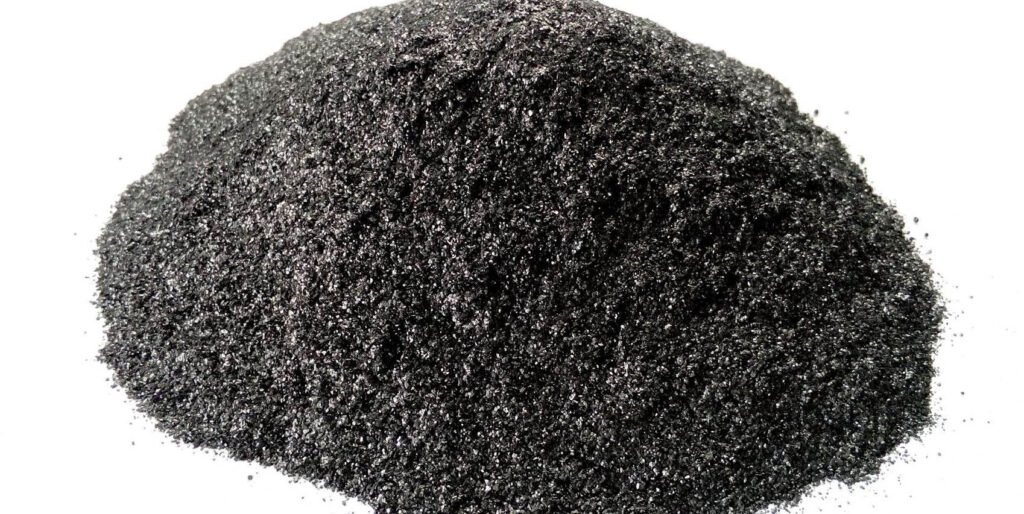
In terms of energy cost, the charcoal carbonization process has relatively low energy consumption, with an average electricity consumption of 150 to 200 kWh per ton of product. If calculated based on the industrial electricity price of $0.10 to $0.12 per kWh, the energy cost is about $15 to $25 per ton. The activation stage of activated carbon requires high temperatures of 800 to 950°C to maintain, accompanied by the input of water vapor or natural gas, and the overall energy consumption can reach 1,000 to 1,200 kWh per ton of product or the equivalent of natural gas. According to the electricity price or gas price, its energy cost is about $120 to $180 per ton of product, which is much higher than charcoal.
local desdusting or tail gas treatement environmental protection cost:
charcoal production are smoke and volatile organic compounds, which are relatively simple to handle, using condensation recovery and basic filtration systems, and the annual operating environmental protection costs are usually less than $10,000. The production of activated carbon, especially when using chemical activation processes (such as KOH or ZnCl₂), will produce a large amount of waste liquid and toxic flue gas, and environmental protection facilities such as neutralization systems, wastewater recovery systems and spray towers are required. The construction cost of these systems is usually between $30,000 and $80,000, and the annual operating costs are also between $50 and $80 per ton of product. Therefore, the environmental protection expenditure of activated carbon projects is much higher than that of charcoal projects, and they are more susceptible to environmental regulations.
Establish investment return model (ROI/IRR) for charcoal/activated carbon projects with annual production of 500 tons, 2,000 tons, 5,000 tons
charcoal production line ROI/IRR:
- At an annual production scale of 500 tons, the comprehensive cost of charcoal per ton is about US$450, the sales price is US$600, the annual profit is about US$52,500, and the fixed investment of the project is about US$50,000. The annual return on investment (ROI) can reach 105%, and the payback period is less than one year.
- When the annual production is 2,000 tons, the profit increases significantly to US$210,000, the fixed investment increases slightly to about US$100,000, and the annual ROI reaches 210%, which has a very good return on investment.
- When the annual production scale is 5,000 tons, the profit rises to US$525,000, the fixed investment is about US$180,000, and the annual ROI is as high as 291.7%, which is a typical high-efficiency capacity amplification return project.
activated carbon production line project ROI/IRR:
- With an annual output of 500 tons, the comprehensive cost per ton is estimated to be US$1,650, the sales price is US$2,200, the annual profit is US$192,500, the fixed investment is US$200,000, and the annual ROI is about 96.2%, which also has the potential to pay back within one year.
- With an annual output of 2,000 tons, the profit increases to US$770,000, the investment is US$500,000, and the annual ROI is 154%, with significant economic benefits.
- The activated carbon plant with an annual output of 5,000 tons will bring an annual net profit of approximately US$1.925 million, and the annual return on investment can reach 213.9%, which is a high-investment, high-return project.
(Notice the above information is based on Chat-GPT's latest model, we can not guarantee the rate of return in this case because different customer may have different raw material cost, and other cost so there are too many variables to be considered. But just to give you an idea how much it would be.)
Charcoal and activated carbon production cost comprehensive summary:
So to sum up, the unit comprehensive production cost of charcoal projects including raw materials, electricity, labor, depreciation, environmental protection, etc. is about US$350 to US$500 per ton. The unit comprehensive cost of activated carbon is significantly higher, usually between US$1,300 and US$2,000 per ton. This cost gap corresponds to the difference in product application positioning in the market: charcoal is mostly used as fuel, soil improvement or barbecue, while activated carbon is widely used in high value-added fields such as air purification, water treatment, and food decolorization.
Shapes
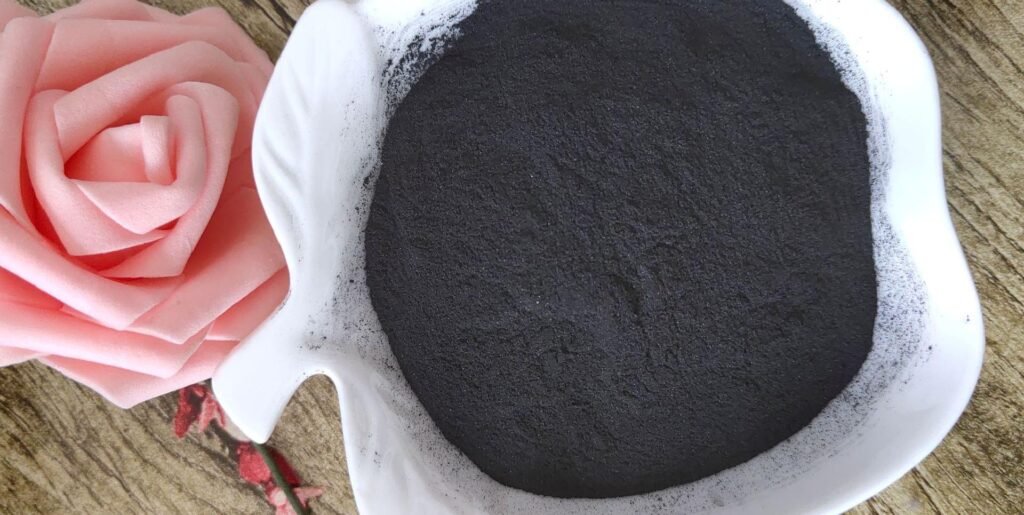
Charcoal has many different shapes, including charcoal, flake carbon, broken charcoal, granular charcoal, charcoal powder, and so on. Activated carbon often time only in the form of powder (diameter ≤ 0.18mm) and granular (diameter ≤ 8mm). Because there is no bulk activated carbon, its application is greatly limited.
- Charcoal: Common forms are irregular blocks, granules or powders. The form depends on the natural structure of the raw materials and is difficult to customize.
- Activated Carbon: Various forms, including powder (PAC), granules (GAC), columns, spheres, fibers (ACF), honeycombs, etc., can be designed and molded according to application requirements.
Application
To be honest there are too many applications, charcoal mostly used in fuel barbecue, heating, low-level adsorption such as soil improvement, simple water purification, metallurgical reducing agent and other scenarios with low requirements for adsorption accuracy. While activated carbon often used in high-end adsorption fields, such as drinking water purification, air formaldehyde removal, industrial waste gas treatment (VOCs), pharmaceutical purification, supercapacitor electrodes, etc.
Main applications of charcoal:
- Barbecue fuel: Charcoal (especially hardwood charcoal) is widely used in outdoor barbecue and catering due to its high burning temperature, good aroma and smokelessness.
- Gardening soil improvement: Charcoal ash or charcoal powder can neutralize soil acidity, improve water permeability, and provide trace elements for plants.
- Fireworks products: It is used as a combustible agent in the manufacture of black powder and fireworks to provide heat source and color effects.
- Raw materials for cosmetics and cleaning products: Bamboo charcoal or charcoal powder is used in facial masks, toothpaste, soap and other cleaning/whitening products to clean pores using its adsorption properties
Main applications of activated carbon
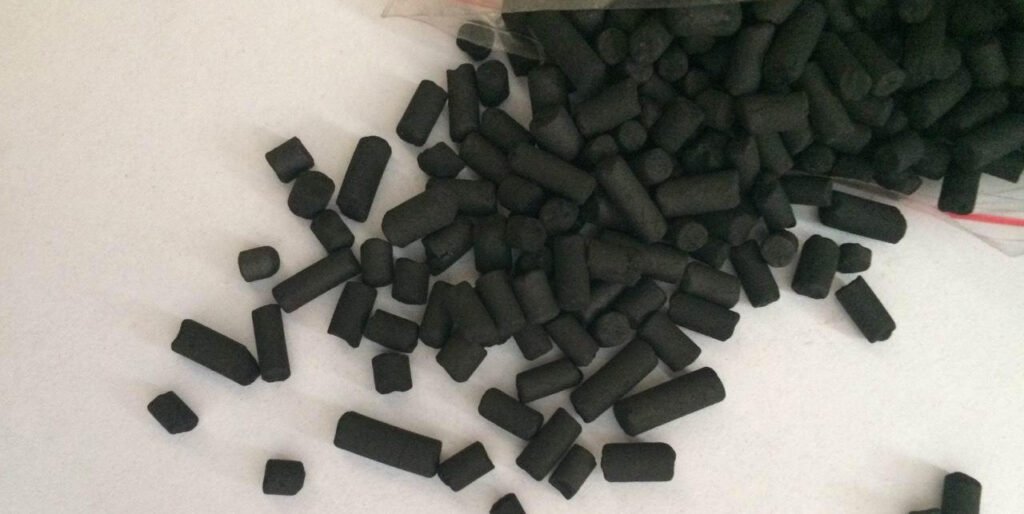
- Water treatment: remove chlorine, VOCs, odor, heavy metals and other pollutants in municipal water supply, swimming pools, industrial wastewater and household water purifiers.
- Air purification and gas adsorption: used in air purifiers, cars, masks, industrial waste gas treatment (such as VOC, H₂S, dioxins, mercury emissions), etc.
- Food and beverage decolorization and deodorization: remove color, odor and impurities in sugar, juice, wine, cooking oil, alcohol, etc.
- Chemical and pharmaceutical purification: used to remove colored bodies, catalytic residues, impurities, and solvent recovery, pharmaceutical intermediate purification.
- Precious metal recovery: in gold and silver ore refining, precious metal ions are captured through the CIP/CIL process.
- Soil and groundwater remediation: used for agricultural soil improvement, heavy metal and organic pollutant adsorption.
- Personal care and medicinal: used for detoxification drugs, facial masks, toothpaste, beauty products, and can also be made into food-grade "black ice cream", etc.
So previuosly we had a detailed introduction of normal charcoal and activated carbon, but what is activated charcoal? now let's find it out.
Activated Carbon vs Activated Charcoal
Actually Activated carbon is exactly the same thing as activated charcoal, just like cat = pussy while pussy could mean something else. Activated carbon and activated charcoal are essentially the same material in terms of structure and function—they are both forms of carbon that have been processed to develop a highly porous structure, giving them an extremely large surface area and strong adsorption capacity. The main difference between the two lies in naming conventions and the context in which the terms are used. So in order not to confuse you the conclusion is they are the same thing.
Is vertical roller mill used in charcoal or activated carbon production?
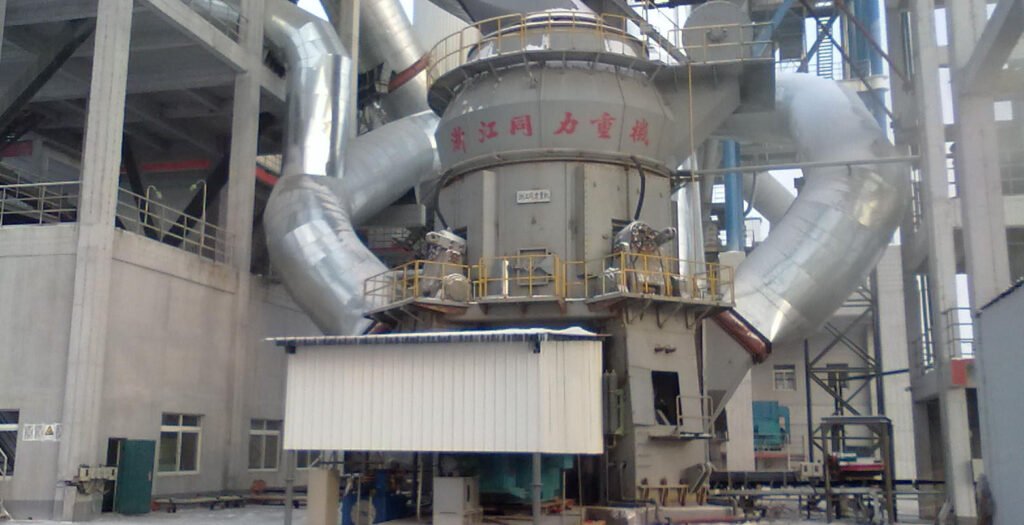
No. Why not? Because the production of charcoal and activated carbon does not require high-pressure, fine grinding of hard materials—which is the main purpose of vertical roller mills.
What are vertical roller mills used for?
Vertical roller mills are high-efficiency grinding machines, widely used in:
- Cement industry (grinding clinker, slag, limestone)
- Mining (coal, ore, non-metallic minerals)
- Power plants (coal pulverizing)
- Metallurgy and chemical processing
What equipment is used in charcoal or activated carbon production?
1. charcoal production line equipment list:
Charcoal is produced by pyrolyzing biomass (e.g., wood, bamboo, coconut shell) in the absence of oxygen at 400–700°C. The process includes raw material preparation, drying, carbonization, and cooling.
Charcoal production line equipment list:
| No. | Equipment Name | Function | Parameters |
| 1 | Biomass Crusher | Crush raw materials like wood, bamboo, shells | Hammer mill / wood chipper; Output size: 10–50 mm |
| 2 | Dryer | Reduce moisture below 15% before carbonization | Rotary drum dryer / Airflow dryer; Capacity: 0.5–5 t/h |
| 3 | Carbonization Furnace | Pyrolyze biomass into charcoal at 400–700°C | Horizontal furnace / Rotary kiln / Traditional kiln |
| 4 | Cooling System | Cool charcoal to prevent self-ignition | Water-cooled screw conveyor or cooling silo |
| 5 | Screening Machine | Remove impurities and control size | Vibrating screen or rotary drum sieve |
| 6 | Charcoal Briquette Machine (Optional) | Shape charcoal powder into briquettes | Roller press / Screw extruder; Shapes: pillow, hexagonal |
| 7 | Packaging Machine | Fill and seal bags for charcoal powder or lumps | Weighing + bag sealing; 10–50 kg bags or jumbo bags |
| 8 | Flue Gas Condenser (Optional) | Recover wood vinegar, tar, and reduce emissions | Condensation tower / Dust filter |
2. Activated carbon production line equipment list:
Activated carbon is made by further activating charcoal (carbonized biomass) to increase its surface area and porosity. This can be done through physical or chemical activation.
| No. | Equipment Name | Function | Specification |
| 1 | Carbonization Furnace | Convert raw biomass to carbon (same as above) | Horizontal or rotary kiln; Temp: 500–700°C |
| 2 | Activation Furnace | Develop pore structure via steam or chemicals | Rotary kiln / Fluidized bed; Temp: 800–950°C; Retention: 30–60 min |
| 3 | Impregnation Tank (for chemical activation) | Soak in KOH, ZnCl₂, H₃PO₄ before heating | SS tank with agitator; Liquid-solid ratio: 1:1–2:1 |
| 4 | Washing System | Remove residual chemicals and neutralize pH | Acid washing tank + rinsing tank; pH target: 6–7 |
| 5 | Drying Machine | Remove moisture post-washing | Rotary dryer / Belt dryer; Inlet temp: ~150°C |
| 6 | Grinding Mill | Achieve required particle size (powder or granular) | Raymond mill / Ball mill / Jet mill; Fineness: 100–325 mesh |
| 7 | Screening Machine | Classify granular activated carbon (e.g. 4×8, 8×30) | Vibrating screen; Output: 1–5 t/h |
| 8 | Packing Machine | Fill product into standard-size bags | 25kg/50kg bags or 500–1000kg jumbo bags; With/without nitrogen |
| 9 | Gas & Liquid Treatment System | Control exhaust from activation & washing | Wet scrubber / Acid-base neutralization system |
| 10 | Control System | PLC-based monitoring of temp, flow, timing | Touch screen panel + sensors; Remote I/O support |
10 Frequently Asked Questions about Charcoal and activated-carbon(FAQ): People Also Ask
Question 1: What’s the difference between charcoal and activated carbon?
Answer: Charcoal and activated carbon differ fundamentally in their manufacturing processes and structural properties. Charcoal is produced by the pyrolysis of organic materials in the absence of oxygen, resulting in a porous structure with a specific surface area typically ranging from 100 to 500 m²/g. In contrast, activated carbon undergoes an additional activation step after pyrolysis, either through physical methods steam or CO₂ at 600–1200°C or chemical methods ZnCl₂ or H₃PO₄, which expands its pore network and increases the specific surface area to 800–3000 m²/g.
Question 2: Can charcoal be used instead of activated carbon?
Tongli Engineer: Charcoal’s limited adsorption capacity restricts its use in applications requiring high efficiency. While charcoal can adsorb large molecules or odors in simple contexts barbecue smoke, it lacks the fine pore structure of activated carbon, which is crucial for removing low-concentration contaminants or small molecules.
Question 3: Is activated charcoal the same as activated carbon?
Answer: Yes, “activated charcoal” and “activated carbon” are synonymous terms referring to the same material. The term “activated charcoal” is more commonly used in consumer contexts
Question 4: How is activated carbon (charcoal) made? / How do you activate charcoal?
Engineer: Activated carbon production involves two main stages: carbonization and activation. raw materials coconut shells, coal, wood are carbonized at 300–600°C in an oxygen-free environment, decomposing organic matter into a carbonaceous char. The char is then activated to develop porosity using Physical activation: Steam or CO₂ reacts with the char at 600–1200°C, etching the carbon matrix to form pores, or chemical activation: Agents like ZnCl₂ or H₃PO₄ are mixed with the char before carbonization, acting as pore expanders. This method typically occurs at lower temperatures (400–900°C) and produces higher pore volumes.
Question 5: What are the typical uses of charcoal vs activated carbon?
Charcoal is primarily used for its calorific value or basic adsorption in low-demand applications:
- Fuel: Barbecues, metallurgical smelting (e.g., iron production), or heating.
- Simple filtration: Primitive water filters or odor removal in refrigerators, though efficiency is limited.
Activated carbon, with its superior adsorption, serves critical roles in high-purity applications:
- Water treatment: Removing organic compounds, chlorine, and heavy metals in drinking water (e.g., municipal filters using 10–20 kg of activated carbon per cubic meter of water).
- Air purification: Capturing volatile organic compounds (VOCs) in gas masks or industrial exhaust systems (e.g., activated carbon filters with adsorption capacities of 0.1–0.5 g/g for benzene).
- Medicine: Oral activated charcoal is a standard treatment for toxin ingestion, with doses of 1–2 g/kg body weight shown to reduce toxin absorption by 50–90%.
Question 6: Why is activated carbon more expensive than charcoal?
Activated carbon’s higher cost stems from its complex manufacturing process and lower yield. The activation step requires specialized equipment increasing capital and operational costs. For example, physical activation consumes 3–5 times more energy than charcoal production, with energy costs accounting for 20–30% of the final price. Additionally, activation reduces the material yield: carbonization alone yields ~50% char from raw materials, while activation further reduces this to 30–40%, making activated carbon production more resource-intensive. In contrast, charcoal’s simpler pyrolysis process has higher yields (40–60%) and lower energy input, lowering costs.
Question 7: Can I make activated charcoal at home?
Theoretically possible but not recommaned due to safety yo, home production of effective activated charcoal is challenging and rarely achieves industrial standards. A common method involves carbonizing wood in a sealed container then activating it with food-grade chemicals like baking soda or salt. However, without controlled temperature systems and precise activation conditions, the resulting material typically has a surface area <500 m²/g (vs. 1000+ m²/g for commercial products). For instance, a study found that home-activated charcoal using steam at kitchen oven temperatures (max ~250°C) had adsorption capacities for methylene blue less than 20% of commercial activated carbon. Safety risks chemical exposure, fire hazards and inconsistent performance further limit its practicality.
Question 8: Is activated charcoal safe to ingest or use on skin?
When purified and meeting regulatory standards, activated charcoal is safe for ingestible and topical use:
- Ingestion: Medicinal-grade activated charcoal is used to treat poisonings, as it binds toxins in the gut without being absorbed. Clinical trials show that 50–100 g doses are well-tolerated, with side effects limited to constipation or black stools. However, it should not be taken with medications, as it may reduce their absorption.
- Skin use: Activated charcoal is a common ingredient in cosmetics face masks, soaps due to its ability to adsorb oils and debris. Its fine particles (typically <50 μm) are non-abrasive when formulated properly, but products must avoid high ash content or impurities, which can irritate sensitive skin. Studies have shown no significant dermatotoxicity in standardized formulations.
Question 9: How effective is charcoal/activated carbon at removing toxins/contaminants?
Activated carbon’s effectiveness depends on its surface area, pore size, and the contaminant’s properties:
- Organic compounds: Highly effective for non-polar molecules like benzene, chloroform, or pesticides, with adsorption capacities often exceeding 0.5 g/g. For example, activated carbon with a surface area of 1200 m²/g can remove 95% of benzene (50 ppm) from water within 30 minutes.
- Heavy metals: Adsorption efficiency varies; activated carbon with oxygen-containing surface groups (e.g., carboxyls) shows better affinity for metals like lead (Pb²+), with removal rates of 70–90% at pH 5–6. However, it is less effective for ionic species (e.g., chloride) without chemical modification.
- Charcoal limitations: Due to its lower surface area and fewer micropores, charcoal removes only ~30–50% of the same contaminants under identical conditions, making it unsuitable for high-purity applications.
Question 10: Can activated carbon be regenerated? By what means?
Yes, activated carbon can be regenerated to restore its adsorption capacity, though efficiency decreases with each cycle:
- Thermal regeneration: The most common method, involving heating spent carbon to 600–900°C in an inert atmosphere, decomposing adsorbed organics. This process restores 50–80% of the original adsorption capacity, with industrial systems achieving 10–20 regeneration cycles before replacement. For example, a wastewater treatment plant may regenerate carbon at 800°C for 1 hour, yielding a regeneration efficiency of 75%.
- Chemical regeneration: Using acids or bases to desorb contaminants, suitable for polar compounds. This method is less energy-intensive but may alter the carbon’s surface chemistry.
- Other methods: Steam stripping for volatile adsorbates, microwave regeneration, or electrochemical regeneration for specific ions.
Charcoal has a predominantly macroporous structure (pore diameter >50 nm) with limited meso- and microporosity, resulting in low specific surface area. For example, wood charcoal typically has a pore volume of 0.2–0.5 cm³/g, with only 10–20% of pores in the micropore range (<2 nm). In contrast, activated carbon features a hierarchical pore network:
Micropores (<2 nm): Account for 50–80% of pore volume, responsible for adsorbing small molecules. A coconut shell activated carbon may have a micropore volume of 0.8 cm³/g, contributing to its high surface area (1500 m²/g).
Mesopores (2–50 nm): Facilitate mass transport to micropores, with volumes of 0.2–0.5 cm³/g in commercial products.
Macropores (>50 nm): Serve as diffusion channels, though their volume (0.1–0.3 cm³/g) is secondary to micro/mesopores for adsorption.
Temperature impact:Lower temperatures (600–800°C) in physical activation promote the formation of mesopores, increasing pore volume for larger molecules. For example, activating coal at 700°C yields a mesoporous structure suitable for dye adsorption.
Higher temperatures (900–1200°C) develop microporosity but risk pore collapse. Steam activation of wood at 900°C for 2 hours maximizes micropore volume (0.6 cm³/g), ideal for gas adsorption.
Time impact:Extended activation time increases pore development but reduces yield. Each additional hour of steam activation at 850°C may increase surface area by 100–200 m²/g but decrease yield by ~10%, as more carbon is oxidized away.
Optimal times balance porosity and yield: chemical activation (e.g., H₃PO₄) often requires 1–3 hours, while physical activation may need 2–4 hours, depending on the raw material.
Yes, charcoal can be activated to produce high-grade activated carbon, though the raw material and activation method influence performance. For example:
Wood charcoal activation: Treating wood charcoal with steam at 800–900°C for 3 hours can increase its surface area from ~300 m²/g to 1000–1200 m²/g, meeting standards for water treatment (e.g., ASTM D6307, requiring iodine adsorption >900 mg/g).
Coconut shell charcoal activation: Chemical activation with ZnCl₂ at 500–600°C converts charcoal into activated carbon with surface areas of 1500–1800 m²/g, suitable for air purification (e.g., removing VOCs with adsorption capacities of 0.3–0.6 g/g).
However, pre-existing defects in the charcoal (e.g., ash content, structural heterogeneity) may limit the final quality, making raw material selection crucial.
Key industrial standards include:
ASTM (American Society for Testing and Materials):ASTM D4607: Defines water purification activated carbon, specifying iodine adsorption (≥1000 mg/g), methylene blue adsorption (≥120 mg/g), and particle size.
ASTM D3801: For gas-phase activated carbon, requiring benzene adsorption ≥28% (by weight).
JIS (Japanese Industrial Standards):JIS K1474: Sets standards for activated carbon, including iodine value (≥800 mg/g for water treatment), pH, and ash content (<5%).
EN (European Norms):EN 13324: Specifies activated carbon for water treatment, mandating iodine adsorption ≥900 mg/g and cadmium content <0.1 mg/kg.
USP (United States Pharmacopeia): For medicinal activated charcoal, requiring specific surface area ≥700 m²/g and low heavy metal content.
Coconut shell: Produces activated carbon with high microporosity and surface area (1200–1800 m²/g), ideal for gas adsorption (e.g., methane storage) and high-purity applications. Its low ash content (<3%) makes it suitable for food and pharmaceutical use.
Wood: Yields activated carbon with balanced micro/mesopore structures (surface area 800–1200 m²/g), suitable for liquid-phase adsorption (e.g., sugar decolorization). Hardwood species (e.g., oak) provide better mechanical strength than softwoods.
Coal: Offers high pore volume (1.0–1.5 cm³/g) and mesoporous structures, making it effective for removing large molecules (e.g., dyes, oils) in wastewater. Bituminous coal activated carbon often has iodine values of 900–1100 mg/g but higher ash content (5–10%) compared to biomass sources.
Ash content: Charcoal typically has 5–20% ash (inorganic minerals), while activated carbon has <5% (often <2% for high-purity grades). For example, wood charcoal may contain 8–12% ash, whereas coconut shell activated carbon has <1% ash after activation.
Adsorption interference: Ash components (e.g., CaO, Fe₂O₃) can occupy adsorption sites or react with adsorbates. A study found that increasing ash content from 2% to 10% reduced activated carbon’s adsorption capacity for phenol by 15–20%.
Purity requirements: In food or pharmaceutical applications, low ash content (e.g., <0.5%) is critical to avoid contaminating the product. High-ash activated carbon is unsuitable for these uses but may be acceptable for industrial wastewater treatment.
Thermal regeneration is the most common one: Heating to 600–900°C in an inert gas (N₂ or steam), decomposing organic adsorbates into CO₂ and H₂O. Energy consumption is ~2000–3000 kWh/ton, with regeneration efficiency of 70–80%. Applications are but not limited to municipal wastewater treatment plants, where regenerated carbon retains 70–80% of original adsorption capacity after 10 cycles.
Chemical regeneration:Acid/base washing: HCl or NaOH dissolves inorganic adsorbates heavy metals, suitable for carbon used in metal plating wastewater. Regeneration efficiency ~60–70%, with lower energy use (500–1000 kWh/ton).
Steam stripping:For volatile organics: Steam at 100–150°C desorbs compounds like benzene, ideal for gas-phase carbon filters. Efficiency ~50–60%, with low thermal stress on carbon.
Microwave regeneration:Energy-efficient: Microwaves heat carbon selectively, reducing energy use to ~1500 kWh/ton. Suitable for small-scale applications, with regeneration efficiency ~60–75%.
The pH of activated carbon (influenced by surface functional groups) and the solution significantly impact adsorption:
Acidic conditions (low pH):Activated carbon surfaces become protonated (e.g., -COOH → -COH₂+), enhancing adsorption of anionic pollutants (e.g., CrO₄²⁻). For example, at pH 3, activated carbon adsorbs 90% of Cr(VI) due to electrostatic attraction, whereas at pH 7, adsorption drops to 50%.
Alkaline conditions (high pH):Surfaces deprotonate (e.g., -OH → -O⁻), favoring cationic pollutants (e.g., Pb²+). A study showed that Pb²+ adsorption increased from 60% at pH 4 to 90% at pH 8, as the carbon surface became more negatively charged.
Neutral pH:Non-polar organic compounds (e.g., benzene) are best adsorbed at neutral pH, as water molecules have less competition for polar surface sites. Benzene adsorption capacity peaks at pH 6–7, with a 10–15% decrease at pH 2 or 10.
Carbon footprint: Activated carbon production has a higher carbon footprint due to energy-intensive activation. Physical activation emits ~1.5–2.5 tons of CO₂ per ton of activated carbon (from energy use and carbon oxidation), while charcoal production emits ~0.8–1.2 tons of CO₂ per ton, primarily from pyrolysis.
Raw material sustainability:Activated carbon from coconut shells or agricultural waste is more sustainable, whereas coal-based activated carbon contributes to non-renewable resource depletion. Charcoal from unsustainable logging causes deforestation, though sustainably managed wood sources mitigate this impact.
Waste generation: Chemical activation produces acidic or alkaline wastewater, requiring treatment before discharge, while charcoal production generates minimal liquid waste but may release volatile organic compounds (VOCs) during pyrolysis.
Conclusion:
So, a standard conlusion will be something like this: "it’s critical to understnad the primary difference between activated charcoal and regular charcoal. Activated charcoal has undergone an additional activation process, giving it a larger surface area and porous structure, making it more effective for industrial uses. Both activated charcoal and unactivated charcoal are made from carbon and have their own distinct properties." But we want to end the article here by inyroducing about ourselves: We are Zhejiang Tongli Heavy Machinery, a company specialized in Charcoal production and activated production R&D technology, you looking for a trust-worthy partner to start your charcoal business? Don't hesitate to call us today! Doesn't Hurt, just a chat.

